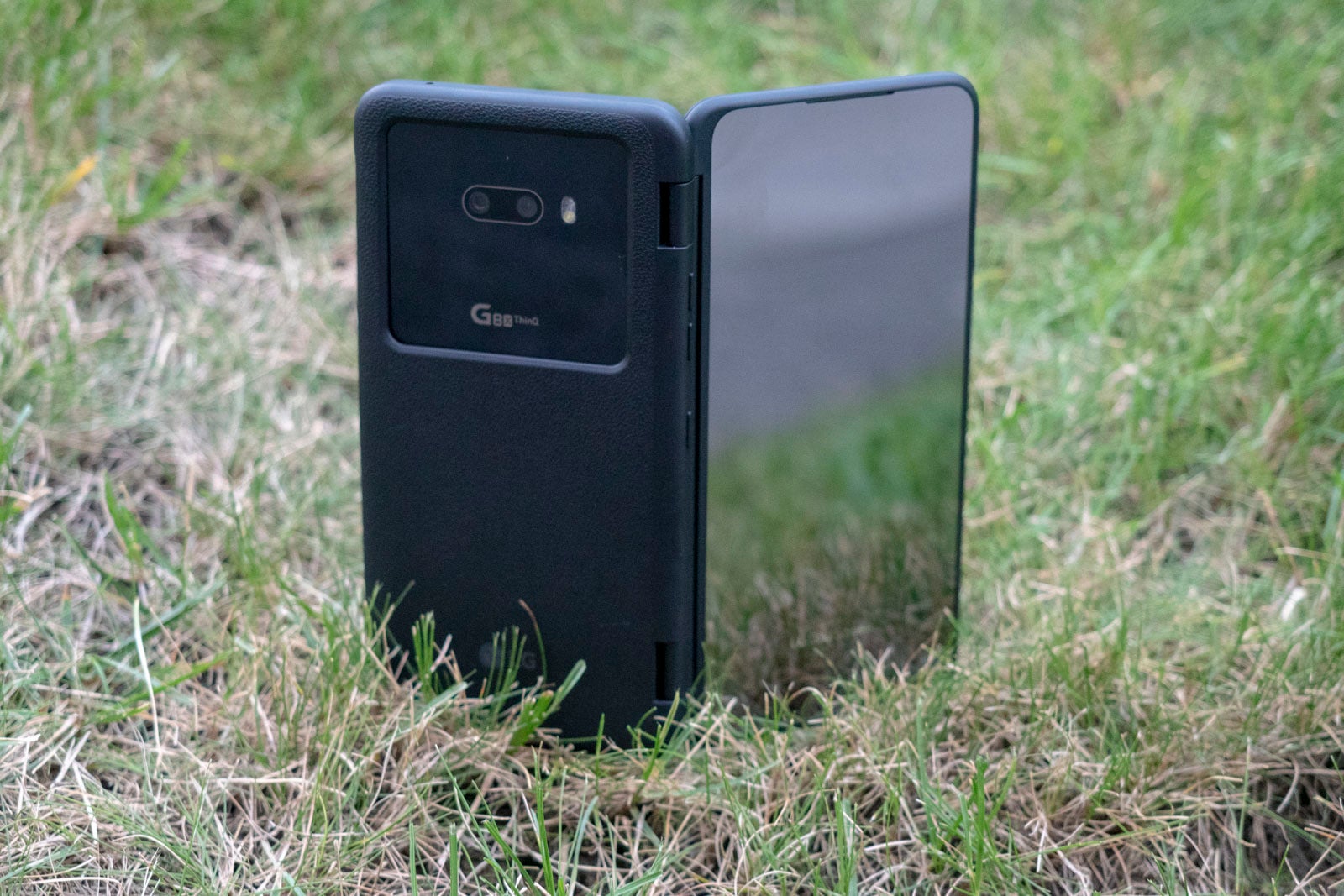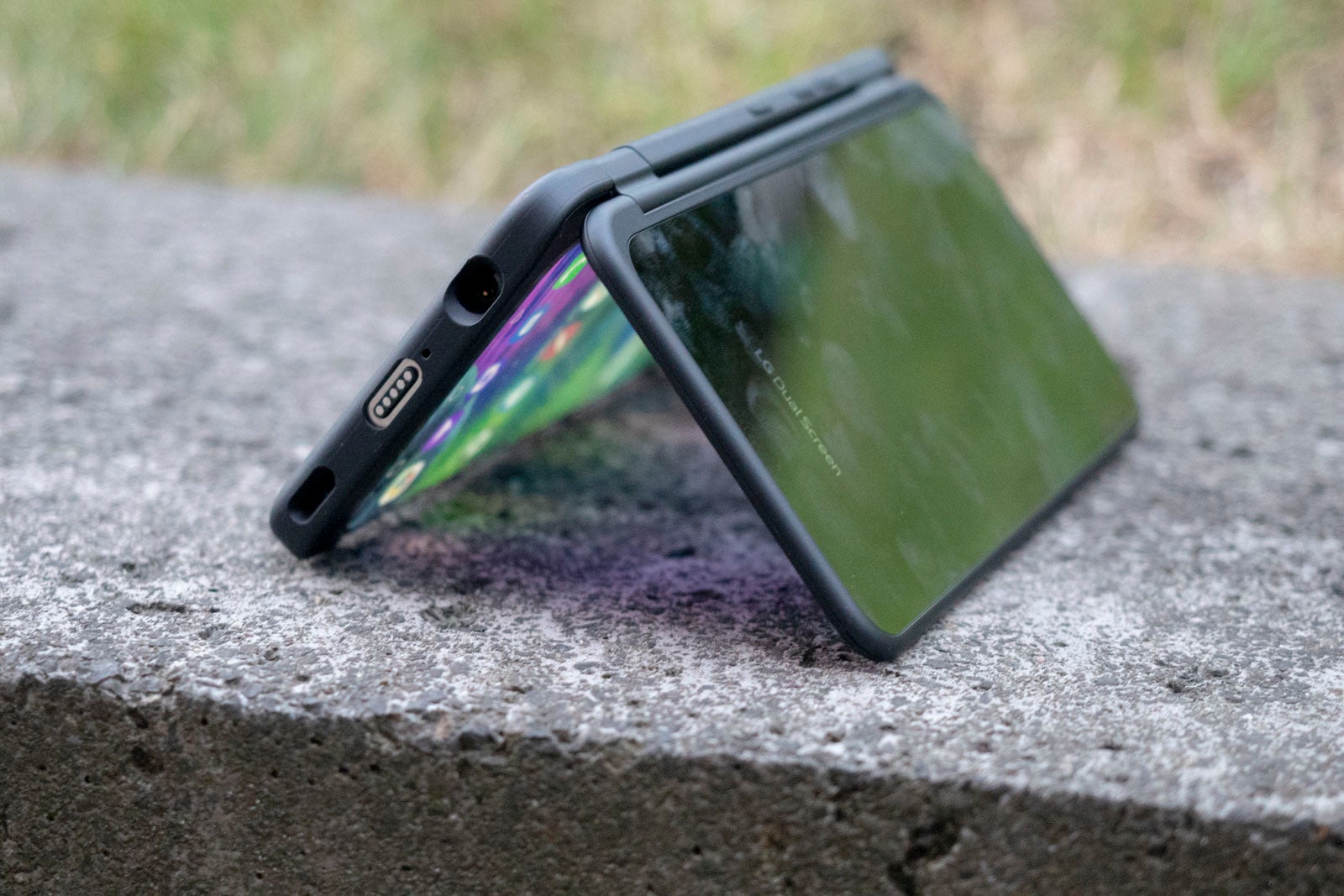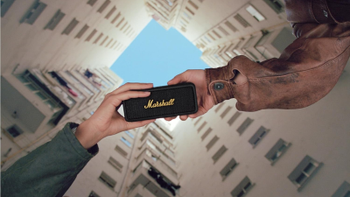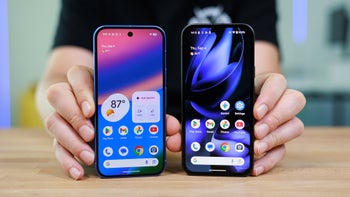LG G8X ThinQ with Dual Screen: a different foldable phone (hands-on)

Design and Display
At first glance, the G8X ThinQ obviously carries the design DNA of its predecessor, though it immediately stands out as a bigger device – it has a 6.4” OLED display, while the G8 ThinQ had a 6.1” panel. The other big difference is in the notch that sits atop the display, which has shrunk down from the iPhonesque design of the previous model, to a much less obtrusive waterdrop-style notch.
Going around the back, the design similarities between the new and the old model continue, as the LG G8X ThinQ has two main cameras—regular and ultra-wide—just like the G8 ThinQ, but there’s no physical fingerprint reader below the camera bump on the new model. That’s because the new phone has an in-display fingerprint scanner of the optical variety.
Familiar camera setup with a couple of software tricks

The LG G8X ThinQ is equipped with two cameras on the back – a standard 12MP snapper with an f/1.8 lens, alongside an ultra-wide 13MP camera with an f/2.4 aperture. Up front, nested in a rather unobtrusive notch atop the display, resides an arguably more impressive selfie cam with a 32MP resolution and 1.6μm pixel size. No matter how you spin it, that’s hardly a groundbreaking combination in 2019, even with the high-res front-facing camera factored in, but at least LG has taken care to include some new software tricks to the table.
So, onto the software bells and whistles then. There’s a new ASMR mode for video recording. We know that ASMR isn’t exactly the freshest… fad right now, but LG has decided to include this fun new mode on the G8X ThinQ. What it does, is increase the sensitivity of the microphone around three times while recording, so you can capture your whispers and other quiet and relaxing sounds with greater clarity. You can also switch between the rear and front-facing camera while shooting video, which is actually a very neat feature, especially for vlogging.
Other features include a 4K Time Lapse mode and a new software image stabilization called Steady Cam, which we are very interested in testing out, especially since EIS is implemented on the sensor level in this phone for even smoother videos.
The last bastion of the headphone jack

The headphone jack seems to be on its way out of the premium smartphone market for good. Samsung has stood its ground by keeping the 3.5mm jack in its Galaxy flagships up until the S10, but the Note 10 didn't have one, and neither will future Gakaxy S series phones.
LG, however, prides itself in making smartphones that can do high-end audio. The 32-bit Hi-Fi Quad DAC has become a staple of LG phones, and it’s also (probably) the sole reason why the company’s latest flagship features an analog audio jack. After all, audiophiles are coincidentally the same people who really can’t go without wired headphones, and LG seems to have struck a chord with them.
Other than that, the LG G8X ThinQ is equipped with two 1.2W speakers that deliver punchy sound, though the real star of the show is set to be the audio quality through the headphone jack.
LG G8X ThinQ specs
| CPU | Qualcomm Snapdragon 855 |
| Display | 6.4" 19.5:9 OLED (2,340 x 1,080 / 403ppi) |
| Memory | 6GB RAM / 128GB storage / microSD (up to 2TB) |
| Camera | Rear: 12MP Standard (F1.8) + 13MP Super Wide (F2.4) Front: 32MP (F1.9) |
| Battery | 4000 mAh |
| OS | Android 9.0 Pie |
The LG G8X ThinQ can also be a foldable phone
The Dual Screen case features the same 6.4” OLED display found on the G8X ThinQ itself. It also throws a second screen in the mix – a tiny 2.1” monochrome panel that’s on the back of the case. It is similar to the “ticker” displays of LG phones of yore, in that it shows time, date, battery charge, notifications and other useful information, without the need to open the case or unlock the device. It is supposed to be very energy efficient, due to its monochrome nature, and turns off after a couple of seconds of inactivity.
The Dual Screen adopts a new 360 Freestop Hinge to allow for viewing at any angle, just like a laptop, and connects to the G8X ThinQ via the USB port, rather than a “Pogo Pins” connector like the previous model. This was mainly done to make the phone look sleeker when used without the case, LG says. Well, good call, we say!
The LG Dual Screen will be available in key markets in the fourth quarter of 2019.
LG Dual Screen specs
| Display | 6.4" 19.5:9 OLED (2,340 x 1,080 / 403ppi) |
| Cover Display | 2.1-inch Mono |
| Contact Type | USB |
| Folding Type | 360 Freestop Hinge |
| Weight | 134g |
Follow us on Google News













Things that are NOT allowed:
To help keep our community safe and free from spam, we apply temporary limits to newly created accounts: